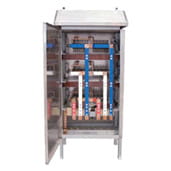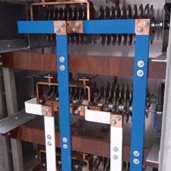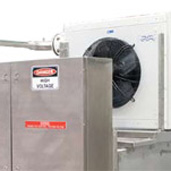Applications
Typical Liquid Resistance Starters installations
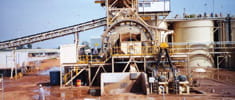 |
Industry Sector: Mining Starter Type: HLR 2300 Application: SAG mill drive Motor Rating: 1 x 3,250 kW motor Duty: 1.5 PU Initial torque, 6 consecutive starts followed by 2 starts per hour when hot, 20 second run-up time |
 |
Industry Sector: Mining Starter Type: HLR 2300 Application: Pump drive Motor Rating: 1 x 2,700 kW motor Duty: 1.0 PU Initial torque, 2 consecutive starts followed by 6 starts per hour when hot, 180 second run-up time |
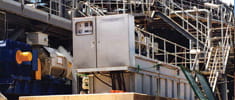 |
Industry Sector: Mining Starter Type: HLR 1000 triple Application: Head end conveyor drive Motor Rating: 3 x 630 kW motors Duty: 0.3PU Initial torque, 6 consecutive starts followed by 6 starts per hour when hot, 60 second run-up time |
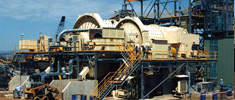 |
Industry Sector: Mining Starter Type: HLR 2300 Application: Ball mill drive Motor Rating: 1 x 3,800 kW motor Duty: 1.5PU Initial torque, 4 consecutive starts followed by 3 starts per hour when hot, 20 second run-up time |
Multi-motor applications
In many larger installations it is not uncommon to find multiple motors driving common load. The HLR range of liquid resistance starters are suitable for such installations and offer several unique characteristics that provide a significant technical and commercial advantage.
Compact dual and triple HLR starters comprise a single liquid electrolyte tank which contains multiple sets of electrodes (liquid resistance banks) to drive multiple motors. This ensures electrolyte level, temperature, and strength/resistance is the same for each driven motor thereby ensuring their acceleration rates are identical.
For larger dual motor drives in which the motors may be controlled via a common controller and multiple tanks, innovative electrical and mechanical design ensures motor acceleration rates are closely monitored and controlled.
Multiple Motors - Directly Coupled
As mentioned above, innovative electrical and mechanical design ensures the acceleration rate of each motor is closely monitor and controlled. This process ensure motors accelerate in a near identical fashion thereby minimising the possibility of one motor working harder than the other as the driven machine is accelerated to operating speed. Once at operating speed, the motors share the load equally and no external control or intervention is required.
Multiple Motors - Individually Coupled
Some machines, for example the head end drive of a conveyor system, may comprise of multiple motors that are not directly coupled. Compact dual and triple starters provide the required acceleration control during the start up cycle.
Because the drive mechanisms in such applications experience different wear rates, it is often necessary to load match motors operating at full speed. This functionality is achieved through the introduction of trimming or load sharing resistors.
Trimming (load sharing) resistors
Available in open frame or fully enclosed arrangements, trimming resistors are used in installations where there is a need to speed match multiple motors driving a common load. Whilst these are designed to meet application specific requirements, a typical specification for a trimming resistor unit may be that it provides 1% additional slip, adjustable in 0.1% increments.
Liquid to liquid heat exchangers
For high start duty applications it is often necessary to add a liquid to liquid type heat exchanger and circulation pump to a HLR starter. These require a cool water supply to also be available on site and can be of the shell and tube or plate type depending upon site conditions and space limitations. Shell and tube type heat exchangers are easier to clean and maintain, but are larger than the plate type heat exchanger.

